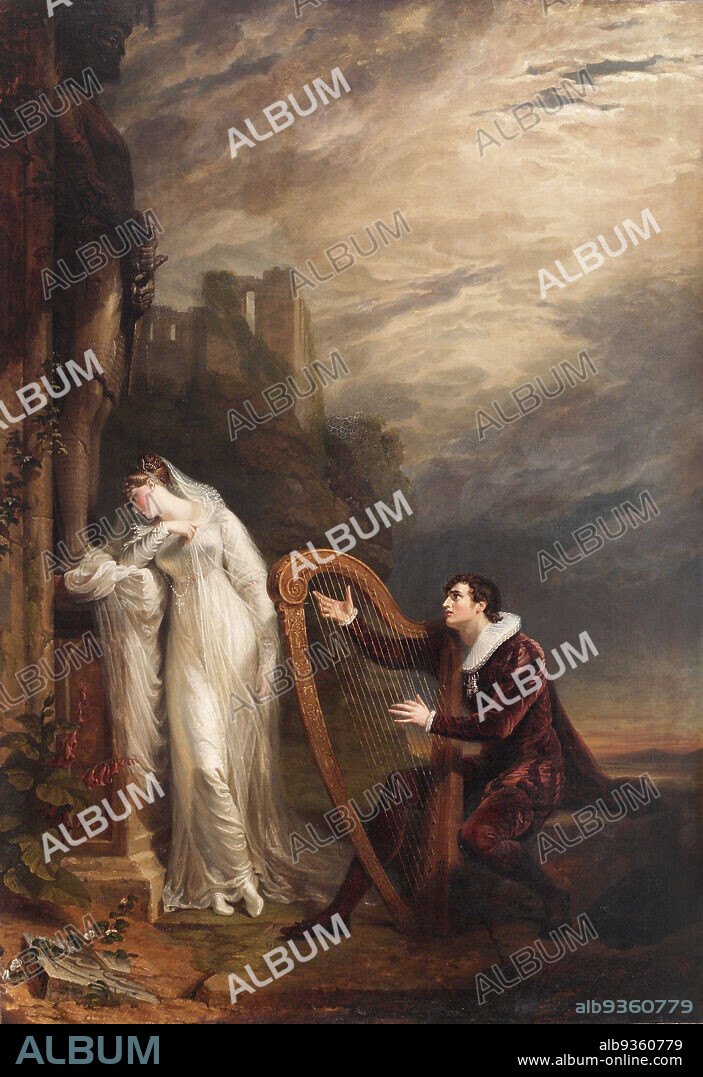alb9360779
Genevieve. (from a poem by S.T. Coleridge entitled 'Love'), George Dawe, 1812, George Dawe's painting Genevieve is a large-scale masterpiece of what art historians have termed 'Romantic classicism', highly fashionable in the early 19th century. It pulls out all the stops: on the left, a slender young female figure a in virginal white dress inclines her blushing face away from the passionate musician, her elbow resting on the plinth of stone statue of an amoured knight, which is only partially visible. To her right, a handsome seated male, dressed in a ruff and a burgundy coloured velvet suit in Elizabethan style, plucks on his harp, his fervent and melancholy gaze fixed on the young woman. The landscape background of romantic crags, ruins and a tumultuous cloudy sky, perfectly frames this dramatic scene. What is it all about?.

|
Añadir a otro lightbox |
|
Añadir a otro lightbox |



¿Ya tienes cuenta? Iniciar sesión
¿No tienes cuenta? Regístrate
Compra esta imagen.
Selecciona el uso:

Descripción:
Ver traducción automática
Genevieve. (from a poem by S.T. Coleridge entitled 'Love'), George Dawe, 1812, George Dawe's painting Genevieve is a large-scale masterpiece of what art historians have termed 'Romantic classicism', highly fashionable in the early 19th century. It pulls out all the stops: on the left, a slender young female figure a in virginal white dress inclines her blushing face away from the passionate musician, her elbow resting on the plinth of stone statue of an amoured knight, which is only partially visible. To her right, a handsome seated male, dressed in a ruff and a burgundy coloured velvet suit in Elizabethan style, plucks on his harp, his fervent and melancholy gaze fixed on the young woman. The landscape background of romantic crags, ruins and a tumultuous cloudy sky, perfectly frames this dramatic scene. What is it all about?
Personas:
Crédito:
Album / quintlox
Autorizaciones:
Modelo: No - Propiedad: No
¿Preguntas relacionadas con los derechos?
¿Preguntas relacionadas con los derechos?
Tamaño imagen:
2060 x 3000 px | 17.7 MB
Tamaño impresión:
17.4 x 25.4 cm | 6.9 x 10.0 in (300 dpi)
Palabras clave:
1812 • ARPA • ESCENA DRAMATICA • ESTATUA PIEDRA • FONDO DE PAISAJE • GEORGE DAWE • GORGUERA • ISABELINO ESTILO • IZQUIERDA • MUJER JOVEN • POEMA • PRINCIPIOS DEL SIGLO XIX • RUINAS
 Pinterest
Pinterest Twitter
Twitter Facebook
Facebook Copiar enlace
Copiar enlace Email
Email
